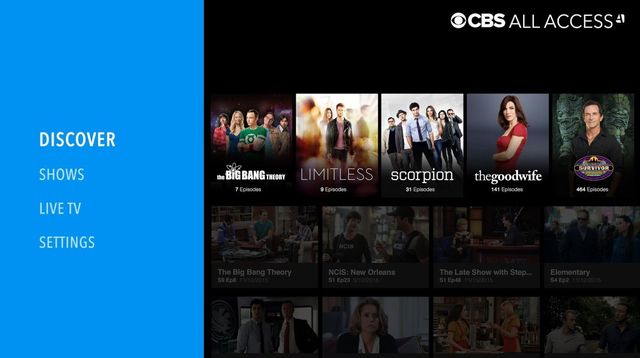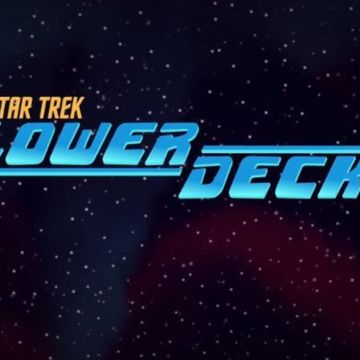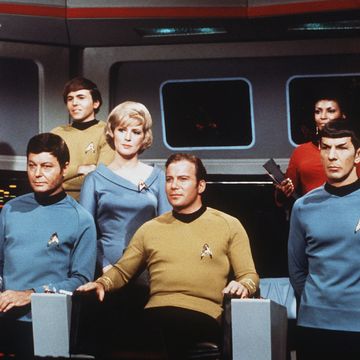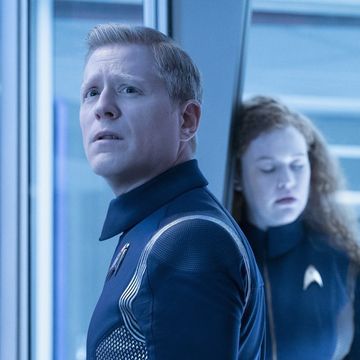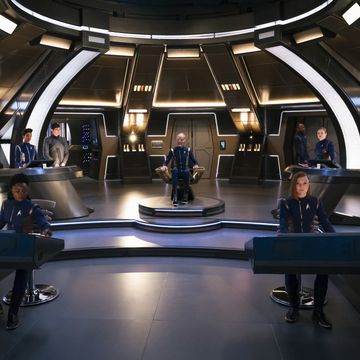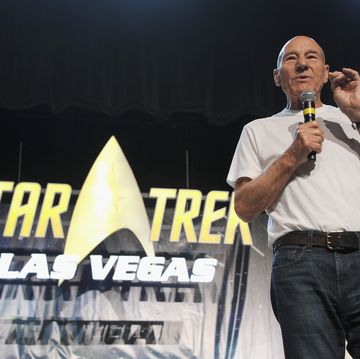Star Trek: Discovery finally debuted last night to mixed but hopeful reviews. The first Trek TV show in a dozen years definitely has promise. What's yet to be seen is whether that promise makes fans open their wallets.
CBS released the first two episodes of Discovery last night. While the first aired on traditional broadcast CBS, the second was tucked behind a paywall at CBS All Access, the network's streaming site/app/service for all things CBS. That's where the remaining 13 episodes of the series' first season will live, which means that, barring any creative Googling, you'll pay $6 or $10 monthly for the privilege of watching the newest version of Star Trek.
Trek often portrays a rosy picture of humanity's future. But CBS's decision to hide Discovery inside its silo app as a prestige lure for people to pony up is a potentially worrying picture of TV's future, one in which we're asked to pay for a slew of single-entity streaming services.
So Many Services
Netflix was once monolithic in its domination of streaming. But in the past several years, many major copyright owners have gradually withdrawn content from the service, which has come to the fore with approaching departure of 30 Rock. Vanity Fair called it the "end of the wild west" of streaming.
There's an even bigger exodus on the horizon though: Disney is set to take nearly all of its content off of Netflix and hide it within its own streaming service. This means no more Marvel movies, no more Star Wars, and no more films for keeping your kids busy, unless you pay $5 a month for the Disney app. ESPN, also owned by Disney (and part owned by Hearst, the parent company of Popular Mechanics), will also launch its own streaming service.
This may leave more choice when it comes to programming—after all, owning the copyright makes it pretty easy to leave it up there indefinitely. But it also leaves cord-cutters in a tricky position. If they want to keep current on TV and movies, they're going to have to subscribe to lots and lots of services.
The Money Adds Up
For the sake of comparison, a just-above-basic cable television plan from Time Warner/Spectrum costs more than $60 for cable alone, and it only goes up after that. No surprise, then, that the number of cord-cutters is on the rise as people try to shed that fat monthly bill.
What we're seeing now, though, is that the big cable bundle is starting to be replaced by lots of little ones. Add to the fact that internet providers are slowly introducing data caps on broadband access, with Comcast being the biggest abuser of this, and streaming becomes potentially even more costly since all these services will nom away at your monthly allotted data cap. Add in 4K content and that cap starts to look smaller and smaller.
If you're paying only for, say, Netflix and Hulu, then the monthly bills don't seem so bad. But let's say you want to watch Star Trek. Commercial-free CBS All Access (where you can also watch SO MUCH Big Bang Theory) will cost you $10. Hulu without ads is $12. The most basic, standard definition Netflix plan is $8 for streaming on one device at a time, while going all the way up to four devices + high definition will put you at $12 (there's a meet-in-the-middle at $10.) Amazon Video comes with Amazon Prime, which costs $99 per year or $10.99 if you go with a month-to-month plan. Disney will be $5 whenever it launches, and ESPN will be around the same price for what sounds like a terrible service where you have to be a cable subscriber already to get any new games.
That's $55 already, and you haven't added optional HBO or Showtime streaming through Prime or Hulu or another service (you're paying $15 and $9 for those, respectively). If you opt for all of these services, your streaming-only bill is hovering at $80. That's not including the bevy of other Amazon Channels options, from fairly well-known entities like PBS, Starz, and Cinemax down to odd Bollywood channels, B-movie fiestas, and more. A half-dozen services all with their own rules, logins, rates, and headaches.
Bundles and Bundles
Now, one could argue that, at the very least, this is better than the old days of the cable bundle, where you might get to choose between a small, medium, and large bundle of channels, but not much more. That's true. The current streaming environment allows you to pick and choose a bit more. If you only care about watching, say, Star Trek: Discovery, The Handmaid's Tale, and Twin Peaks: The Return, then you could pay for CBS All Access and Hulu with the Showtime add-on, and cancel them when you're done.
But if you thought the end of the monthly cable bill was the end of paying for content you don't want, then sorry, because that is not the future we're getting. If you poked around CBS All Access after watching the first two episodes of Discovery, then you probably noticed it's a wasteland of bad sitcom and reality show reruns, many of which are available elsewhere (you might already be paying for them with Hulu). In short, you could end up with a lot of things you don't want in order to watch the few things that you do—all while burning through your broadband data cap. All someday we'll have to pay more when a favorite show makes an inevitable exodus to a brand-new, nobody-asked-for-this streaming slop pile that's basically your favorite show plus that episode of Bonanza where they meet a leprechaun.
Welcome to the future of television.
